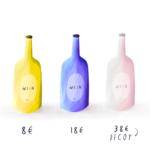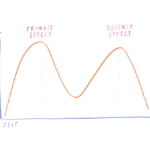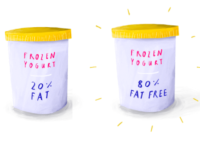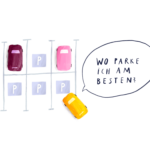Imagine you meet someone who is incredibly attractive at first glance. You automatically attribute qualities such as intelligence, friendliness and competence to them.
Welcome to the realm of the halo effect!
How exactly does this effect work and what consequences does it have for our daily lives?
In this article, we explore the depths of the halo effect and show you how to see through its deceptions.

Table of contents
What is the halo effect?
The halo effect, also known as the halo effect, is a cognitive distortion in which a single positive characteristic of a person, product or brand influences our entire perception.
Examples and effects:
- People: A charismatic politician is perceived as competent and honest, even without objective evidence.
- Products: A popular smartphone model can improve the perception of the entire brand.
- Brands: A company that is known for its environmental friendliness is often seen as ethical and trustworthy.
Background of the effect
The halo effect and the halo
Exciting examples of the halo effect
Job interview
In job interviews, first impressions, such as an applicant's clothing or body language, can influence the entire selection process. Recruiters tend to view applicants who appear confident and well-dressed as more competent and suitable, regardless of their actual qualifications.
Teacher's favorites
Teachers may judge students to be more intelligent and hardworking based on a single characteristic, such as wearing glasses. This often leads to these students being given preferential treatment and better grades, which may not reflect their actual performance.
Product magic
A company that is known for a particularly high-quality product can positively influence the overall brand image through the halo effect. Consumers tend to view all products of this brand as high quality, which can increase sales and brand loyalty.
Design enchantment
An appealing product design can also lead customers to rate the quality of the product higher. This perception bias is often reflected in product reviews, where the overall experience is influenced by the external appearance.
First encounters
In social interactions, first impressions, such as a person's appearance or clothing, can influence our entire perception of that person. Someone who appears attractive is often seen as friendlier, more intelligent and more competent.
Media gloss
Celebrities use the halo effect by staging themselves perfectly. A positive media appearance can lead to the public perceiving them as more talented and morally impeccable, which increases their popularity and market value.
Political appeal
Teachers may judge students to be more intelligent and hardworking based on a single characteristic, such as wearing glasses. This often leads to these students being given preferential treatment and better grades, which may not reflect their actual performance.
Customer service
First impressions in customer service can shape the entire perception of a company. A friendly and helpful customer advisor can lead to customers perceiving the entire company as customer-oriented and professional.
Investment psychology
Investors tend to value companies with charismatic and trustworthy managers more positively. The halo effect can lead to share valuations being distorted by the personal charisma of management.
Health heroes
A positive first impression of medical staff, such as a friendly tone of voice or a well-groomed appearance, can increase patient confidence in their competence and the quality of treatment.
Causes of the halo effect
Evolutionary roots
In the Stone Age, it was vital for our ancestors to be able to quickly distinguish between friend and foe. This ability to process impressions at lightning speed and draw conclusions from them helped them to survive in a dangerous environment. This quick judgment is based on striking features that immediately catch the eye.
Psychological mechanisms
Our brain is designed to simplify the immense complexity of the world. We constantly take in a flood of information and have to process it efficiently. To cope with this, we tend to quickly categorize people and things. This categorization helps us to quickly adapt our behavior to the situation at hand by simplifying the complex and making it easier to understand.
Automatic and unconscious processes
Consequences of the halo effect
Five examples of the consequences of the halo effect
1. enticing online advertising: the influence of the influencer
A well-known influencer praises a fitness program in a post. Her fans, impressed by her fit and happy appearance, buy the program without questioning it further. The positive impression of the influencer outshines the actual effectiveness of the program.
2 The brilliance of the new: an impulsive purchase
A shiny new smartphone attracts everyone's attention in the electronics store. Due to its modern design and stylish presentation, it is assumed to exceed all technical requirements. Without checking the specifications or alternatives, it is bought immediately. Later, it turns out that there are cheaper and better models.
3. real estate illusion: is it worth buying a house?
The idea of home ownership is tempting, but the halo effect can distort the decision. Attractive advertising and positive reviews idealize buying a home, while high interest rates, expensive maintenance costs and market overheating are overlooked. Without thorough analysis, there is a risk of making an unwise investment.
4. financial trap: the shiny investment
A financial advisor presents a new investment opportunity, supported by impressive presentations and professional brochures. The advisor's positive first impression and the appealing presentation of the investment lead people to believe that it is a safe and profitable investment. A substantial sum is invested, only to find out later that the risks and hidden costs are higher than expected,
5. choosing a partner: Falling in love through outward appearances
You meet someone at a party who is extremely attractive and charming. These positive qualities lead to the assumption that the person is also a perfect match in other areas of life. A relationship begins, only to realize later that the initial attraction has clouded judgment and fundamental differences have been overlooked.
Avoiding the halo effect
Self-reflection and sensitization
First of all, it is important to become aware of the existence of perceptual distortions. No one is immune to them, and the more you know about them, the better you can recognize and minimize them.
Conscious self-observation
A phase of self-observation helps to find out in which situations and through which triggers pigeonholing occurs. This promotes a more conscious and reflective judgment.
Openness and communication
Openness towards other people and reflective communication are crucial. Instead of being guided by first impressions, new information should be actively questioned. Asking direct questions and sharing opinions can help to get a more complete picture.
Time and patience
Rash judgments are often made under time pressure. It is therefore important to take sufficient time to make decisions, especially when making important decisions such as hiring new employees. This reduces the risk of being influenced by the halo effect.
Systematic evaluation
In order to reduce the influence of the halo effect, assessments should be carried out in a systematic and structured manner. For example, when correcting exams, each task can be assessed for all students in turn to prevent a student's overall impression from influencing the assessment of individual tasks.
Get a second opinion
A second opinion can help to correct distorted views. The exchange with others can open up new perspectives and help to make a more balanced judgment.
Critical review
When making important decisions, it should always be questioned whether the first impression dominates the entire decision-making process. For example, when selecting an applicant, not only the external appearance should be evaluated, but also the actual skills and qualifications.
How you can use the halo effect in marketing
Branding through design and innovation
Design of websites and online presence
Nowadays, first impressions are often made online. A professionally designed website and a high level of user-friendliness can have a positive influence on visitors' perception. Clearly presented USPs (Unique Selling Propositions), testimonials and reviews help to convey a positive image and strengthen trust in the brand.
Strengthening the brand image through associations
Prominent advertising ambassadors
The opposite of the halo effect: the horn effect
The halo effect can also occur in reverse. If a person or object is evaluated on the basis of a negative characteristic, we tend to also evaluate all other characteristics of this person or object negatively. This often happens without being objectively justified. This type of distortion of perception is known as the horn effect (devil's horns effect).
The mechanism by which a single impression outshines other features can have both a positive and a negative effect. While the halo effect overemphasizes positive features, the horn effect causes negative features to distort the entire image.

Conclusion
The halo effect is like a secret trick that our brain uses to make quick judgments. If you recognize this trick and use it consciously, you can not only make smarter decisions, but also gain advantages for yourself.
Imagine using an appealing design or celebrity endorsements to show your brand in a better light. Or realize that your first impression of someone doesn't always show the whole picture. This reflection allows you to make more objective and fair judgments.
So use the halo effect strategically and consciously. It can help you to make better decisions and at the same time positively influence the perception of those around you. Stay mindful, question first impressions - and use them in a targeted manner if it benefits you. This way you can get the best of both worlds!
Further psychological triggers

Decoy effect
When we are presented with an unattractive option, the more attractive alternative seems even more tempting

Scarcity
The feeling that something could soon no longer be available arouses desire.

Dunning-Kruger effect
The effect describes how people with little experience overestimate their abilities.

Primacy effect
The first piece of information remains most strongly in our memory and shapes our perception.

Nudging
Nudging uses small incentives to subtly guide behavior without restricting freedom of choice.

Framing effect
The way in which information is presented significantly shapes perception.

Diderot effect
The effect describes how a new purchase awakens the desire to buy more suitable products.

Paradox of Choice
Many options can seem overwhelming. Few options simplify the decision.

Mere exposure effect
The more often we see, hear or experience something, the more we like it.

Affect heuristics
Quick decisions are often guided by strong feelings rather than rational considerations.

Social Proof

Endowment effect
People tend to attribute a higher value to things just because they are in their possession.

Halo effect
The halo effect ensures that a single quality influences the entire image.
To the article about the halo effect.

New
The way in which information is presented significantly shapes perception.

New
When we are presented with an unattractive option, the more attractive alternative seems even more tempting

